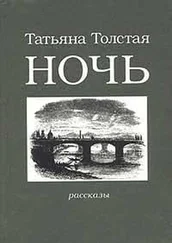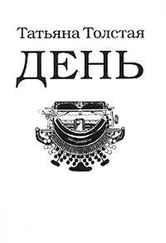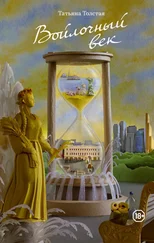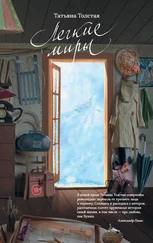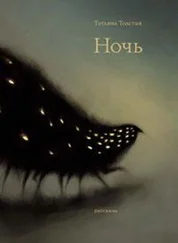“Somehow life and death have merged into one,” Leo Tolstoy wrote in horror, and from this moment on, and till the end, he fought back as best he could—it was a colossal battle of biblical proportions. “And Jacob was left alone; and there wrestled a man with him until the breaking of the day.” It’s terrifying to witness the battle of a genius with the Devil: first one seems to overcome, then the other.
The Death of Ivan Ilyich is such a battlefield, and it’s difficult to say who won. In this novella, Tolstoy says—tells us, repeats it, assures us, hammers it into our brains—that life is death. But, in the end, his dying hero is born into death as if into a new life; he’s freed, turned around. Enlightened, he leaves us for a place where, seemingly, he’ll be given consolation. “New art” derides the very idea of consolation, of enlightenment, of rising above—it derides it while taking pride in that derision, as it dances and celebrates.
Conversations about God are so endlessly complicated that it’s scary even to engage in them, or, on the contrary, very simple: if you want God to exist, He does; if you don’t, He doesn’t. If He is everybody, ourselves included, then for us He is, first and foremost, ourselves. God does not impose himself on us. Rather, it’s His distorted, falsified image that’s imposed upon us by other people, while God simply and quietly exists within us, like still water in a well. While searching for Him, we search for ourselves; while refuting Him, we refute ourselves; while mocking Him, we mock ourselves—the choice is ours. Dehumanization and “desacralization” are one and the same.
“Desacralization” was the slogan of the twentieth century; it’s the slogan of ignoramuses, of mediocrity and incompetence. It’s a free pass doled out by one dimwit to another bonehead while trying to convince the third nincompoop that everything should be meaningless and base (allegedly democratic, allegedly accessible), and that everyone has the right to judge everyone else; or no one does—that authority can’t exist in principle, that a hierarchy of values is obscene (since everyone’s equal), and that art’s worth is determined solely by cost and demand. Novelties and fashionable scandals are surprisingly not that novel and not that scandalous: fans of the Square keep presenting various bodily fluids and objects created from them as evidence of art’s accomplishments. It’s as if Adam and Eve—one suffering from amnesia, the other from Alzheimer’s—were attempting to convince each other and their children that they are clay, only clay, and nothing but clay.
—
I’m considered an “expert” in contemporary art by an arts fund in Russia that’s subsidized by foreign money. Artists come to us with projects and we decide if they should get funding or not. There are actual experts working alongside me on this panel, true connoisseurs—old art, “pre-Square.” We all can’t stand The Black Square and the “self-assertion of that entity called ‘the abomination of desolation.’” Yet they keep submitting projects that consist of “the abomination of desolation,” solely of the abomination, and nothing else. We are obligated to spend the money allocated to the fund or else it will be closed. We try our best to fund those who come up with the least pointless and annoying ideas. One year, we funded an artist who placed empty picture frames along a riverbank, and another who wrote “ME” in big letters that cast a beautiful shadow, as well as a group of creators who organized a campaign to clean up dog feces in Saint Petersburg’s parks. Another year, it was a woman who affixed stamps to rocks and mailed them to various cities in Russia, as well as a group that made a pool of blood in a submarine—visitors had to step over the blood while listening to the letters of Abelard and Heloise via headphones. After our meetings, we members of the panel step out for a silent smoke, trying to avoid eye contact with one another. We then silently shake hands and hurriedly walk home.
Toward the end of the 1980s—when everything seemed possible, in bloom, and promising—I was interviewed by some newspaper. They asked about literature and history, and I said that, if I could, I’d publish a book portraying twentieth-century Russia in letters, with each missive corresponding to a single year.
This would have been nearly impossible because there were whole decades when letters lied; you couldn’t write down anything truthful. People even lied in their personal diaries, fearing searches and arrests, and so, of course, lying in one’s letters was natural. But perhaps with a massive effort it would still be possible to put together such a book, said I. There are literary archives and attics with trunks, aren’t there? And how simultaneously wonderful and disquieting it is to read other people’s letters. It’s like peering into a stranger’s window: you feel awkward, you feel curious, it’s better than the movies. Inside there is somebody else’s singular, sui generis life.
Shortly after this interview, a man (I still don’t know who he was) found me and presented me with a thick stack of letters: Please read. “Perhaps you’ll find them useful,” he said. I read them and returned them: alas, useful they were not. All of them were written by the same woman—I don’t remember her name, so let’s call her Maria Vasilievna—who lived in the ancient provincial Russian town of Ryazan. I couldn’t quite figure her out, nor did I catch to whom she was writing, and the mysterious messenger didn’t care to elaborate. Maria V. worked as a trolley car driver, but her life was full of spiritual and cultural inquiries. Grammatical errors abounded in her writing, but her interests were all-encompassing: from simple rhymes she read in the local newspaper, to reminiscences of the famous Russian philosopher A. Losev’s funeral, which she considered an important cultural milestone, and for which she had traveled to Moscow to stand, full of reverence, in the crowd.
One of her letters I did ask to keep. The story that it told somehow pierced my heart. Twenty-five years have passed, but I’ll tell it now.
Retell it.
In her town of Ryazan, in one of the dilapidated houses across from the bus depot, there lived an artist with his wife and kids. He spent years salting away money for a bedroom furniture set. His wife dreamt of having it all—a night table on either side of a double bed, a wardrobe with a full-length mirror inside, intricate carvings—and for all of it to look ever so expensive, ever so artistic. Finally he’d saved up enough to go to Moscow to explore the antique shops.
Back in those days, all of the Frunze Embankment was basically one big antique market. All kinds of lovely junk was being sold there for a pretty penny: flame mahogany, black stuff with gold, white stuff with gold, stuff on crooked claw-feet, and stuff with the wings of a griffin. They had beds, chests of drawers, armchairs, oval and octagonal tables, centipede tables, kidney-shaped tables, consoles, vases, chandeliers, leaf-shaped crystal garlands, statuettes, paintings, and clocks, and everything was just so, so lovely.
As he walked amid all this splendor—a thick stack of bills tucked into the inside pocket of his jacket, fastened with a safety pin so it wouldn’t get stolen in the metro—he was using his keen artist’s eye to pick out the best. Meanwhile, back home in Ryazan, his wife, as you can imagine, was anxious about that stack of bills, which had taken years to accumulate—anxious but at the same time daydreaming, imagining how magically their marriage bed would be transformed, how mysteriously the lacquer on the nightstand would shine in the moonlight, how their love would be renewed, how her girlfriends would die of envy.
Читать дальше


